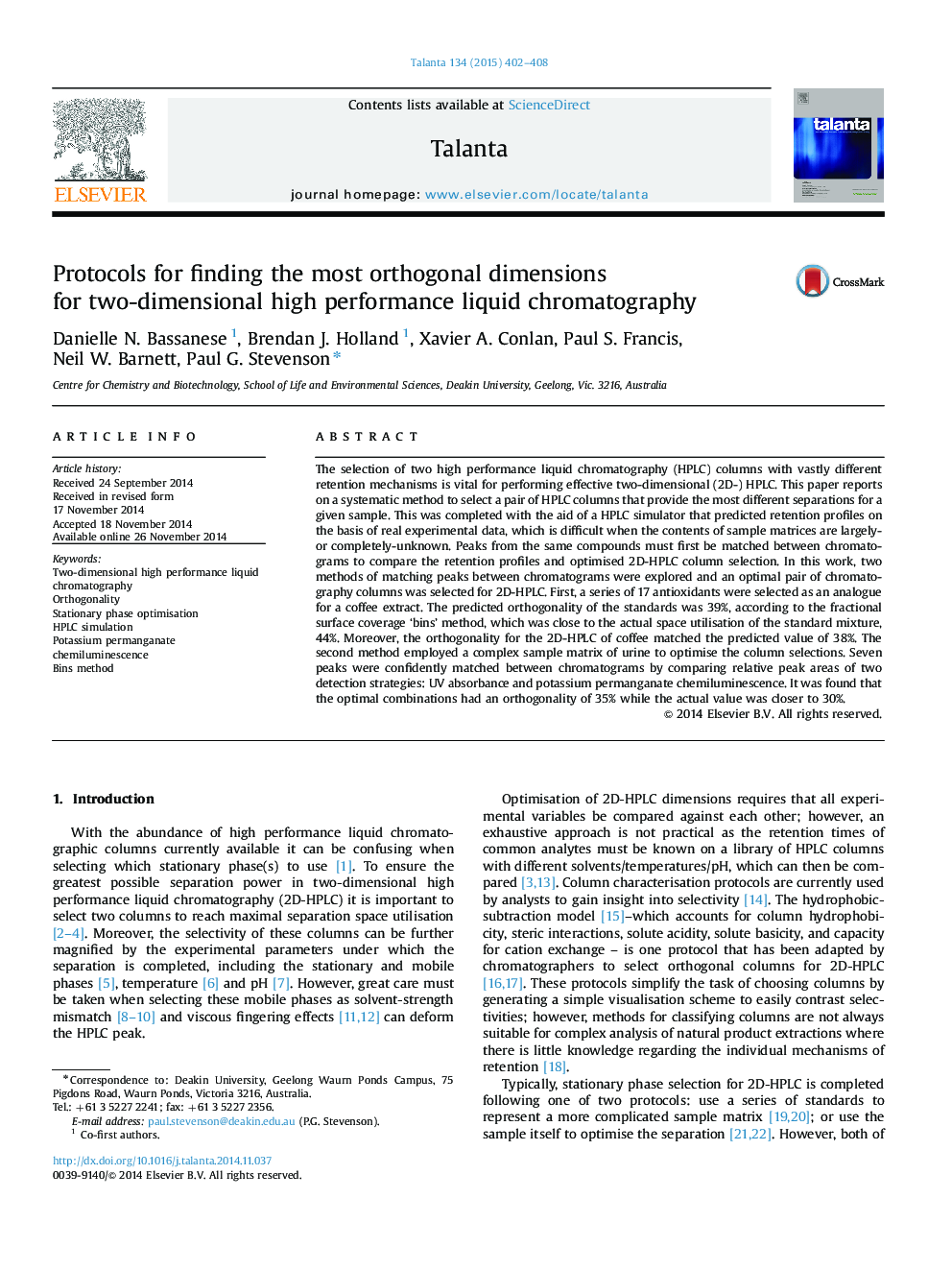| Article ID | Journal | Published Year | Pages | File Type |
|---|---|---|---|---|
| 1244097 | Talanta | 2015 | 7 Pages |
•Columns for two-dimensional chromatography were compared to maximise orthogonality.•Simulation software was employed to rapidly optimise 2D-HPLC operating conditions.•2 Optimisation protocols were compared to find the best 2D-HPLC column combination.•Both protocols were proven to be effective at predicting the final orthogonality.•The overall analysis time required to optimise the separations was excessive.
The selection of two high performance liquid chromatography (HPLC) columns with vastly different retention mechanisms is vital for performing effective two-dimensional (2D-) HPLC. This paper reports on a systematic method to select a pair of HPLC columns that provide the most different separations for a given sample. This was completed with the aid of a HPLC simulator that predicted retention profiles on the basis of real experimental data, which is difficult when the contents of sample matrices are largely-or completely-unknown. Peaks from the same compounds must first be matched between chromatograms to compare the retention profiles and optimised 2D-HPLC column selection. In this work, two methods of matching peaks between chromatograms were explored and an optimal pair of chromatography columns was selected for 2D-HPLC. First, a series of 17 antioxidants were selected as an analogue for a coffee extract. The predicted orthogonality of the standards was 39%, according to the fractional surface coverage ‘bins’ method, which was close to the actual space utilisation of the standard mixture, 44%. Moreover, the orthogonality for the 2D-HPLC of coffee matched the predicted value of 38%. The second method employed a complex sample matrix of urine to optimise the column selections. Seven peaks were confidently matched between chromatograms by comparing relative peak areas of two detection strategies: UV absorbance and potassium permanganate chemiluminescence. It was found that the optimal combinations had an orthogonality of 35% while the actual value was closer to 30%.
Graphical abstractFigure optionsDownload full-size imageDownload as PowerPoint slide
